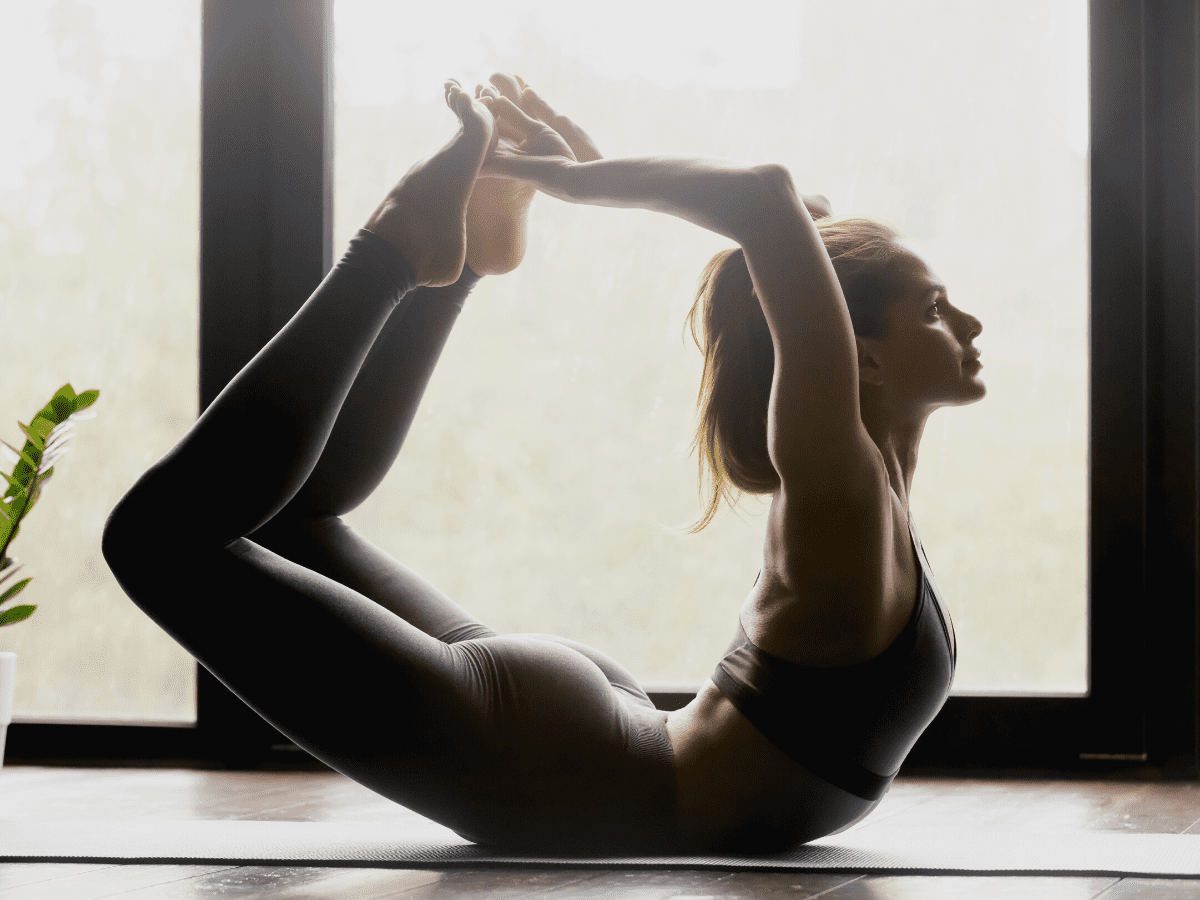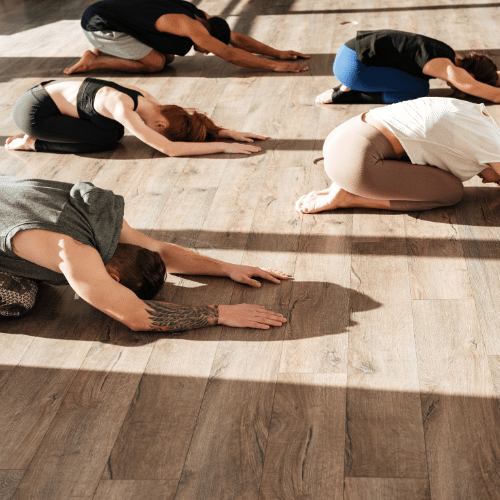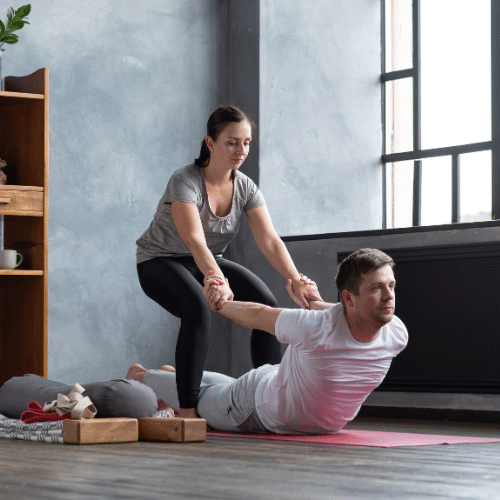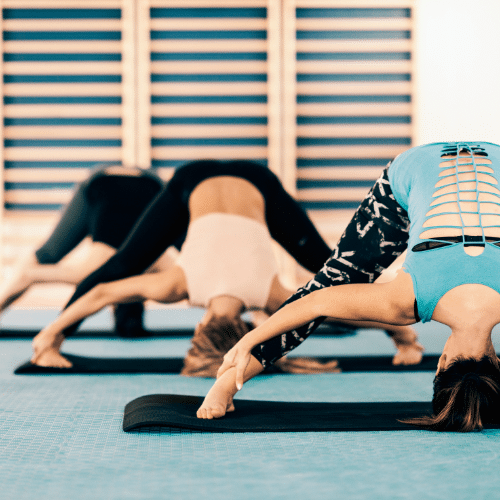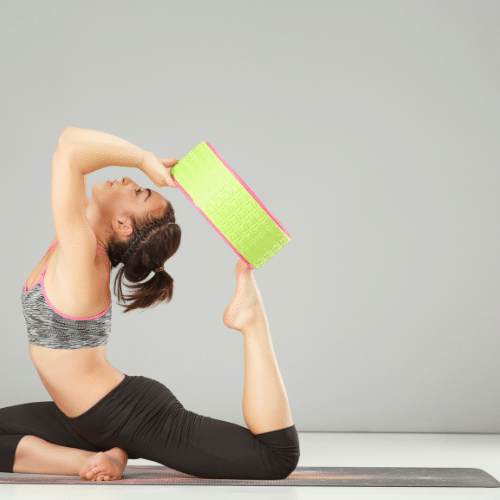If you’ve heard of Purna Dhanurasana before, you likely already know it’s an intense but highly beneficial yoga pose that many yogis must prepare for to begin their practice. The asana is the eighth of twelve poses contained in the basic postures of Integral Yoga. Also known as “Full Bow Pose” in English, Purna Dhanurasana is an advanced asana that provides a deep stretch for a yogi’s abdomen. Many yogis praise this particular asana for its ability to strengthen and improve digestive system functions and alleviate feelings of gastritis.
The Dhanurasana practice aims to stimulate the Manipura chakra, or the life source chakra, located in your solar plexus. This chakra represents the yogi’s identity and sense of self, so stretching and activating this area can also improve your confidence. It generates a magnificent flow of life energy, or prana, that can be invigorating and relaxing all at once.
However, because this asana is more advanced, you must take time to prepare for your practice, especially if you’re new to the pose. You’ll want to learn about some essential considerations before you start to help protect yourself from injury. This step-by-step guide will ensure you’re ready to practice Purna Dhanurasana and feel all the fantastic benefits.
The Key Purna Dhanurasana Benefits
This asana stretch provides an immense stretch to the abdomen, so most Purna Dhanurasana benefits revolve around the solar plexus area and the associated Manipura chakra. Still, the pose does have many other benefits you can feel throughout the body.
Purna Dhanurasana’s uncanny ability to relieve epigastric pain is the most noticeable benefit. This pain can occur when the lining of the stomach becomes inflamed and can be very uncomfortable. The prana energy that finds its way to your abdomen will help soothe discomfort, and you may gradually find yourself finding continuous relief from gastritis symptoms and epigastric pain. The advanced asana can also assist digestive, reproductive, and excretory operations so that they all function smoothly.
Because Purna Dhanurasana is an intense exercise of your muscles, it’s instrumental in toning your body’s muscles, especially in the abdomen. Over time, repeated practice can improve your posture, give you unique and deeper flexibility, and shed away excess body fat. The arms, thighs, shoulders, and legs are also involved in this pose, so each muscle of these muscle groups will see an extra boost in strength.
Purna Dhanurasana is also popular for its mental health benefits. Once you are comfortable practicing it, it’s highly relaxing and helps you melt away tension or feelings of anxiety. And the life force energy will help you feel invigorated, fighting off fatigue and helping you conquer your day.
Preparing for Purna Dhanurasana
Before you begin your practice, it’s important to note that some yogis will want to avoid attempting Purna Dhanurasana. You want to take these contraindications seriously; the pose can create health problems if you have any, and it’s always wise to be cautious and alert during your practice.
Some of the more obvious reasons you’d want to avoid this pose include having any recent abdominal surgery, having back pain, a back injury, or a hernia. The pose puts too much stress on the abdominal muscles for those with these issues to attempt it.
Other contraindications may not be as clear. Heart problems, neck injuries, joint issues, high blood pressure, colitis, and pregnancy are all reasons to avoid Purna Dhanurasana. The pose will push your body to its limit, so if you have any questions about whether or not it’s safe to execute this asana, please speak with a medical professional before you try.
Even if you don’t fall into any of these categories, you should protect yourself before practicing Purna Dhanurasana. Be sure to stretch and warm up your muscles before you begin and avoid the asana entirely if you feel pain or pressure in your back or joints. It’s also advised not to practice this asana on a full stomach, which could make you uncomfortable.
You’ll get the maximum benefit from Purna Dhanurasana when you practice it before or after a forward bending asana. But no matter how confident you are, do not push yourself; pushing your body beyond its limits in a pose like this can be very dangerous, so if you feel too much strain, pull back gently and slowly exit the pose.
Doing Purna Dhanurasana Correctly
Like all yoga poses, ensure you keep focusing on your breath. Start by lying down on your belly. You want to keep your forearms out in front of you. On your next exhale, start bending your legs at the knees. Go as far as you can; the goal is to touch your butt with your heels. Clasp your feet or ankles with your hands as you lift your upper body slightly.
Next, inhale deeply and continue pulling your upper body and thighs upward as you look up to the ceiling. Tuck your elbows in towards your face as much as you can. Always keep your knees in line with your hips and press your pubic bone firmly into your mat. Double-check each element of the asana: ensure that your arms are reaching back to your ankles, you’re arching your back, and your thighs and chest are lifting off the floor with the chest pushing forward.
If you tick off all of these boxes, you should now be comfortably in Purna Dhanurasana, and your body’s shape will resemble a bow. Keep breathing here, aiming your breath into your upper back. Try to stay in this position for at least fifteen seconds. When you’re ready, release the asana slowly as you exhale. You must get into and out of the posture steadily. Always remember to focus on your breath and how your body feels.
With this guide, you should feel confident executing this more advanced but gratifying asana. You can now reap all of the beautiful Purna Dhanurasana benefits and improve your relationship with Yoga, your body, and your sense of self!


